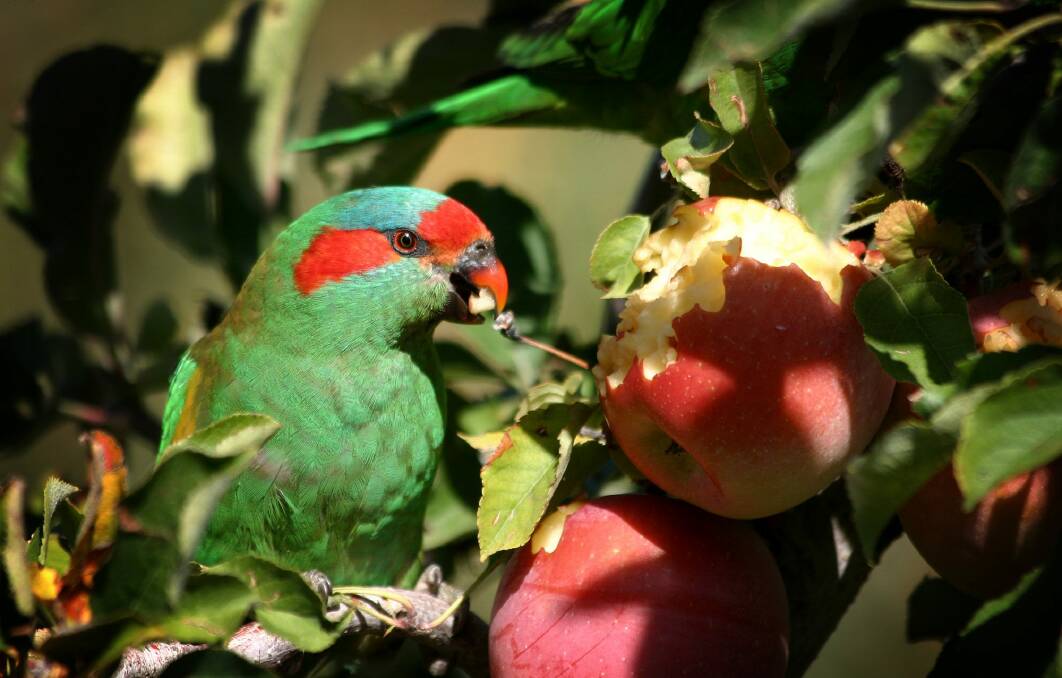The clematis is spilling from the trees, a great froth of white and beauty. The hardenbergia is a vivid purpley-blue, draped on shrubs and creeping along the ground; the indigofera is beginning to flame pinky-purple; and the Acacia longifolia is glowing yellow. And I didn't have to plant a single one of them, nor water, weed or feed them.
Subscribe now for unlimited access.
$0/
(min cost $0)
or signup to continue reading
We are lucky enough to live in the bush though, come to think of it, luck didn't come into it much, but determination, scrimping, saving, working three jobs at a time and making a glorious leap of faith involving a firm belief that a life beyond a safe public service pay cheque and grey carpeted offices was the only possible future for my life.

But back to the bush. Its flowers have proliferated for longer than our species have been human, and they are stunning, prolific, hardy and an annual glory. And no one has ever lugged a packet of fertiliser and scattered it under their branches.
It's the same with the wild fruit trees you find where old farm houses once stood now lost to termites, time or bushfire. But the hardiest fruit trees survive – quinces, pears, damson plums. We have an ancient peach tree, its trunk hollowed out by rot, with only two twisted branches still living. No one has tended that tree for at least sixty years, but it still bears fruit.
But of course it has been fed, just as the bush is fed, just not by us. Every year the birds that eat the fruit perch there, and leave their droppings as they eat. Birds nest in the branches and leave even more droppings. Wombats and wallabies eat any fallen fruit and the grass growing around the base too. Their droppings are rich in the microflora that helps make elements like phosphorus and nitrogen in the soil more available to plant roots. (To all who know mycorrhizal associations: I know that this is oversimplifying to the point of inaccuracy, but I'm not allowed to write a 10-page explanation here.)
And every leaf that falls gets recycled, with the lyrebirds, bandicoots, ants, bettongs, echidnas, earthworms and at least a hundred others helping the process along.
Our garden is fed by much the same process. I do feed bits of it, every few years, as we give away so much fruit that not everything that grows here is recycled back into the garden.
But we also bring in nutrients – the chook food becomes hen manure to feed the trees, with the hens helpfully scattering it for us as they peck and scratch in the orchard, even the birds who feed at the bird feeder or the brought-in carrots the wombats get as a treat add their small ten cents worth to soil fertility. (Okay, the treat is a bribe so they stop attacking the doormat. Or visitors' legs.)
There is an old French farming tradition that you can carry on in your own garden. It's a way of gathering fertility from your neighbours for your own place. Canny farmers would have a dovecot. The pigeons would range over the district, eating grain and other people's fruit, then roost at home, leaving a night's worth of droppings and fertiliser below their perches. You can do the same by having trees and prickly for wild birds to roost or nest in, nesting boxes, and continuous fresh water to tempt them to roost with you, not next door.
When you buy most fertilisers you just buy a few nutrients – not nearly as many trace elements as your plants need. When you buy chook food, bird seed or mulch you aren't just feeding your garden more richly, but adding soil conditioner. Mulch will help aerate the soil, keep down weeds and keep in moisture – or keep it out if the mulch is too thickly compacted and the rain shower brief, so use it wisely. Bird droppings will add or encourage some the many microscopic life forms that our plants need to thrive.
There is also the magic of leftovers. I can't even begin to calculate how many garden nutrients get to our trees and vegies via the leftovers we give to the chooks.
Today they have got all the soup bones and carcases from yesterday's soup-making binge; a third of a dish of lasagne we didn't get around to eating and probably wouldn't and some stale chocolate slices. NB – we only feed them in the morning and only what we know they will manage to eat before the leftovers go bad in the heat or encourage rats. We practise scrupulous cleanliness with chook feeding dishes and the chook bucket the scraps get put into too, never putting it down on the ground and cleaning it thoroughly before bringing it back to the kitchen.
And, yes, we do buy a little fertiliser in, but only a tiny amount for 800 fruit trees and three vegetable gardens. Our garden is mostly fed like the bush – with recycled plants and bird and animal droppings, and through three droughts and innumerable heatwaves and even a (tiny, brief) blizzard or two it has proved hardy and gloriously, deliciously productive.
This week I am:
- Fighting the lyrebirds for the first of the asparagus spears … we eat them, they scratch them up so they wither before we can cook them;
- Apologising to the hellebores I insulted a few weeks ago – they are in full glorious bloom now, in reds and double whites;
- Welcoming the fantail cuckoo call, the first of the season, and yes, right on the first day of spring;
- Trying not to count the flower buds on the crab apples and rhododendrons;
- Raking up the fallen camellias, and beginning to say goodbye to them for the season; and
- Still glorying in daffodils. Plus plum and Himalayan Pear blossom.

